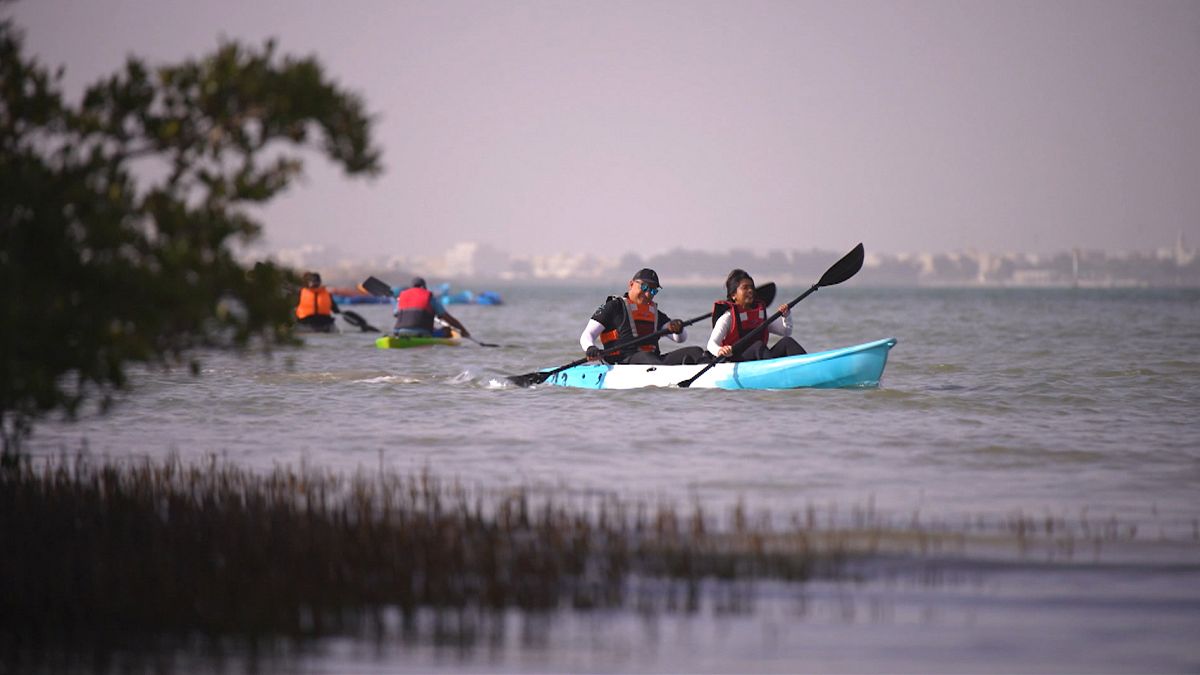Worth its salt: Can desalination help address Europe’s freshwater needs?

The process of desalination has been around for centuries, but has had only limited success in providing freshwater for humans. The EU is exploring ways to make it a viable solution to future water shortages.
Desalination is the process of removing salt from seawater or brackish water to make it useable for people in a range of purposes, including drinking. It is seen as a drought-proof alternative to water supplies threatened by climate change. Several southern EU countries rely on it to provide freshwater, for drinking and agriculture.
But desalination plants are expensive to build and run, and use a lot of energy, although new technologies are reducing costs and the environmental impact.
They can also have an adverse environmental impact on marine animals and plants. Desalination produces a byproduct called brine – a concentrated salt solution with chemicals.
When discharged back into the sea it can harm fish, coral and plankton. Many consider desalination a ‘last resort’, only to be used once all other options such as reusing wastewater and reducing leaks have been tried.
But while the technology has significant drawbacks, without it, some EU regions would not be able to meet their water demands.
What’s the EU’s policy on desalination?
Desalination is already widely used in Spain, Cyprus and Portugal. Greece and Italy are expanding too. In some regions of Europe we won’t be able to meet demand fully unless we both reuse wastewater and desalinate some sea water.
· The latest update of the Taxonomy Regulation (a cornerstone of the EU’s sustainable finance framework and an important market transparency tool) classifies desalination as a “green” investment under strict conditions related to environmental aspects. Green energy should be used as much as possible and brine must be reduced and in case of discharges must be safely treated and diluted in sea water.
· Desalination has drawbacks, including high energy consumption and maintenance, and disposal of the brine. New desalination plants should come after a major effort to protect and restore the water cycle, and ensure the efficient use of water, by encouraging reuse, reducing water leakages, cutting abstractions and so on. Desalination should be undertaken only where environmentally better alternatives are not available and that it must be in the framework of an integrated water management, with a fair balance between water supply and demand.
What are the benefits of desalination?
· Desalination is emerging in response to water shortages, especially in Mediterranean countries, often in combination with wastewater reuse and increased efficiency.
· Several southern EU countries are using desalination to help cover freshwater needs. Yet in the EU, a small fraction of freshwater is obtained through seawater desalination.
· EU facilities can supply up to 2.89 billion m3 of desalted water a year (active capacity).
· 71% of the water produced is used for public water supply (2 billion m3, 4.2% of total water employed in public supply). 17% of the desalinated water produced in the EU is used for industrial applications, 4% in power plants, and 8% for irrigation.
· EU desalination plants are mainly located in Mediterranean countries: about 1,200 plants provide a capacity of 2.37 billion m3 (82% of total EU desalination capacity)
· See here for sources for figures above:
· EU funding into research on desalination totaled €81.5 million from 2014-2019 focused on infrastructural investments and innovation activities.
What are the drawbacks of desalination?
· Desalination plants are expensive to build and operate. The price of water produced with desalination is very high. It is therefore mostly used to produce drinking water.
· It is an energy intensive process, and it is essential that it is done using renewable energy and reducing its energy consumption.
· Desalination produces a by-product, brine (a concentrated salt solution with chemicals) that must be properly disposed of to avoid adverse impacts on the marine environment.
· Constructing water intakes and infrastructure such as pipes will also lead to permanent alteration of hydrographical conditions (e.g. change of sediments) and could impact the marine life.
What are the financial rules governing desalination in the EU?
· The latest update of the Taxonomy Regulation classifies desalination as a “green” investment under strict conditions related to environmental aspects.
· Desalination projects must meet stringent criteria under the EU Taxonomy, ensuring they contribute to sustainable water use and protection while minimizing environmental impact.
· Criteria include efficient energy use, low greenhouse gas emissions, and adherence to biodiversity protection measures, aligning with EU goals for climate resilience and environmental sustainability.
· For more information see here.
Source: Euro News















